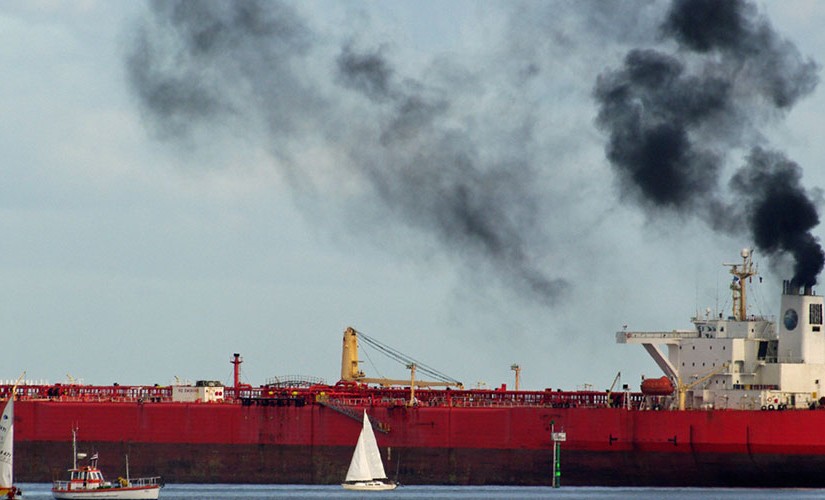The Deepwater Horizon spill, in the Gulf of Mexico, is the largest marine oil spill in history. It was caused in 2010 by an explosion on the Deepwater Horizon oil rig, which then sank. Some 4.9 million barrels of crude oil was released into the ocean, contaminating marine ecosystems far and wide. The spill’s environmental aftereffects are still being felt nearly a decade later.
Not surprisingly, people worldwide remain concerned about the prospect of another massive oil spill with devastating consequences. Yet such spills are fairly rare. Meanwhile, less attention is being paid to a constant environmental threat: cargo shipping.
The shipping industry serves a vital economic function but it also produces around 2.2% of global greenhouse gas emissions, according to the International Maritime Organization (IMO), a UN agency. This rate ranks the industry as one of the most emissions-dependent alongside aviation, which accounts for 3%.
“If shipping were a country, it would be the sixth biggest in terms of emissions share,” The Guardian notes. “And it is growing fast – shipping could produce 17% of global emissions by 2050, if left unchecked. About 90% of the world’s trade is carried by sea.”
Something needs to be done then if we are to keep global emission rates at manageable levels in order to mitigate the effects of climate change. Norway, a shipping powerhouse, recognizes this. The Scandinavian nation has joined forces with the IMO to spearhead a project that aims to cut shipping industry emissions by at least 50%, compared to 2008 levels, by 2050.
The project will bolster efforts by governments and shipping ports to cut emissions via legal means and new polices, through private sector and national partnerships, and by help of new technologies. More than 50 countries have signed on and eight countries from Asia, Africa, the Caribbean, Latin America and the Pacific will be the first to enlist in pilot projects.
“Ships are the largest machines on the planet and the world’s largest diesel engines can be found on cargo ships. These engines can be as tall as a four-storey house, and as wide as three London buses,” the IMO notes. “The largest marine diesel engines have more than 100,000 horsepower (in comparison, a mid-sized car may have up to 300 horsepower).”
Ships are highly efficient when it comes to how much cargo weight they carry per kilometer. The problem, however, is that many cargo vessels rely on highly toxic and pollutive ship fuels that are widely banned onshore. A larger ship can each day burn through millions of barrels of fuel oil, whose content of sulphur oxides can be hundreds of times the rate found in gasoline for cars. This can lead to acid rain over the seas, devastating fragile coral reefs. Ships also release large amounts of soot, which then wafts away on winds far and wide, blanketing beaches and other areas in it.
New blends of fuel oil for ships are being developed. One solution is a gas oil with low sulphur content, which can be blended with heavy fuel oil to lower its sulphur content. ”These new blends are likely to cost more initially than the ‘heavy fuel oil’ bunkers (fuel) used by the majority of ships today,” the IMO says.
Alternatively, ships can switch to more ecofriendly fuels or continue to rely on heavy fuel oil, but install scrubbers to reduce their output of sulphur oxides.
Source: sustainability-times.com



















